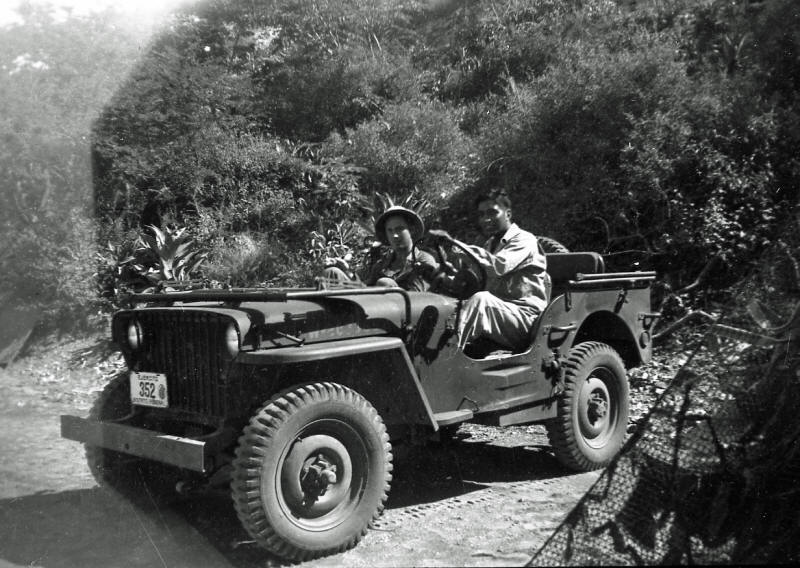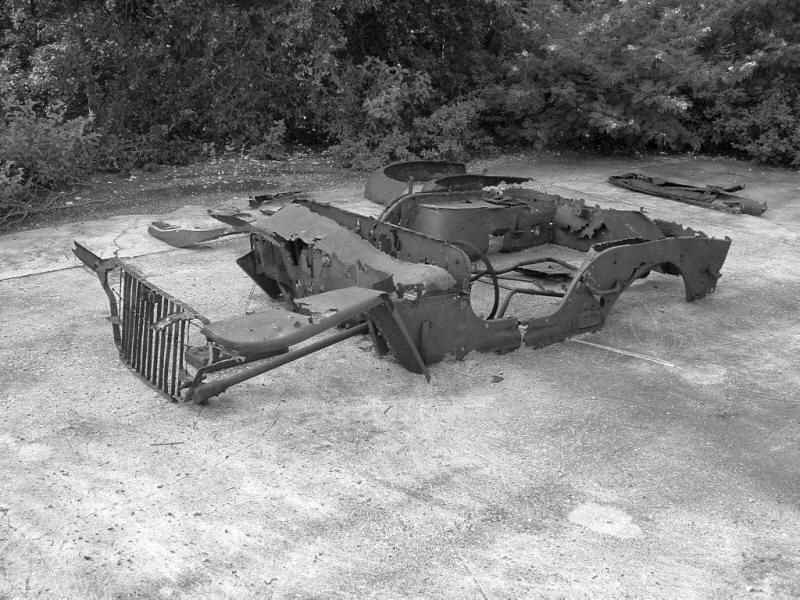Joseph A. Serbaroli, Jr. who lives in Yonkers, NY sent the following.
My father was with the 56th Coast Artillery, which was originally part of California’s coastal defenses. He was in Battery C.
The 56th Coast Artillery then became the 58th Coast Artillery on April 1, 1942 and was sent from California to Venezuela.
Later Battery C, which was my dad’s unit, was sent to Curacao on March 4, 1943 and became the 815th Coast Artillery, while his buddies in Battery D arrived in Aruba March 11, 1943 were sent to Aruba on March 5, and became the 814th C.A.
Many of the pictures he took were either on Aruba or Curacao. I’ll be sending you some of these to see if you can help me identify the locations.
After he left the Caribbean, he became part of the 767th Field Artillery in General Patton’s 3rd Army, 22nd Corps. He landed in France right after D-Day and drove across Europe with a 105 mm field cannon in support of Patton’s troops

My dad’s gun crew sitting on a 155 mm. Joe says he thinks this was one was in Venezuela. He further states that the cloth on the tires protected the rubber from becoming brittle in the sun.
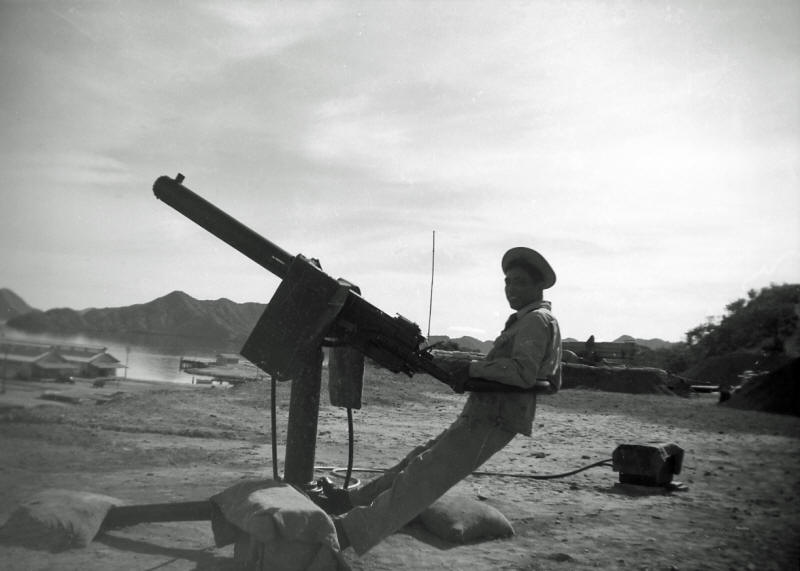
Anti-aircraft gun to protect the 155 mm guns from aerial attack. Venezuela or Curaçao?
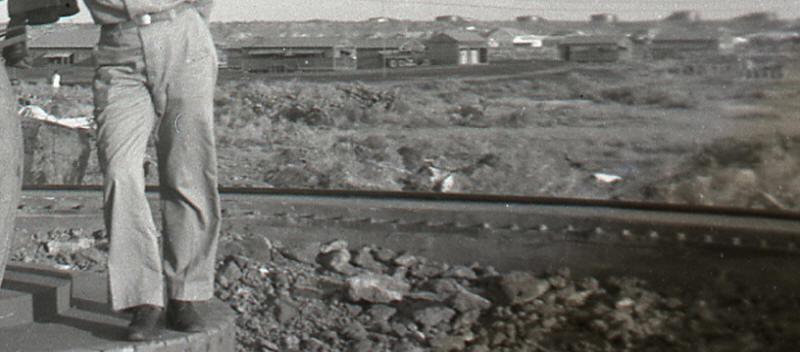
I cropped the photo above so you could get a better view of the housing in the background. Does anyone know where this gun was located?
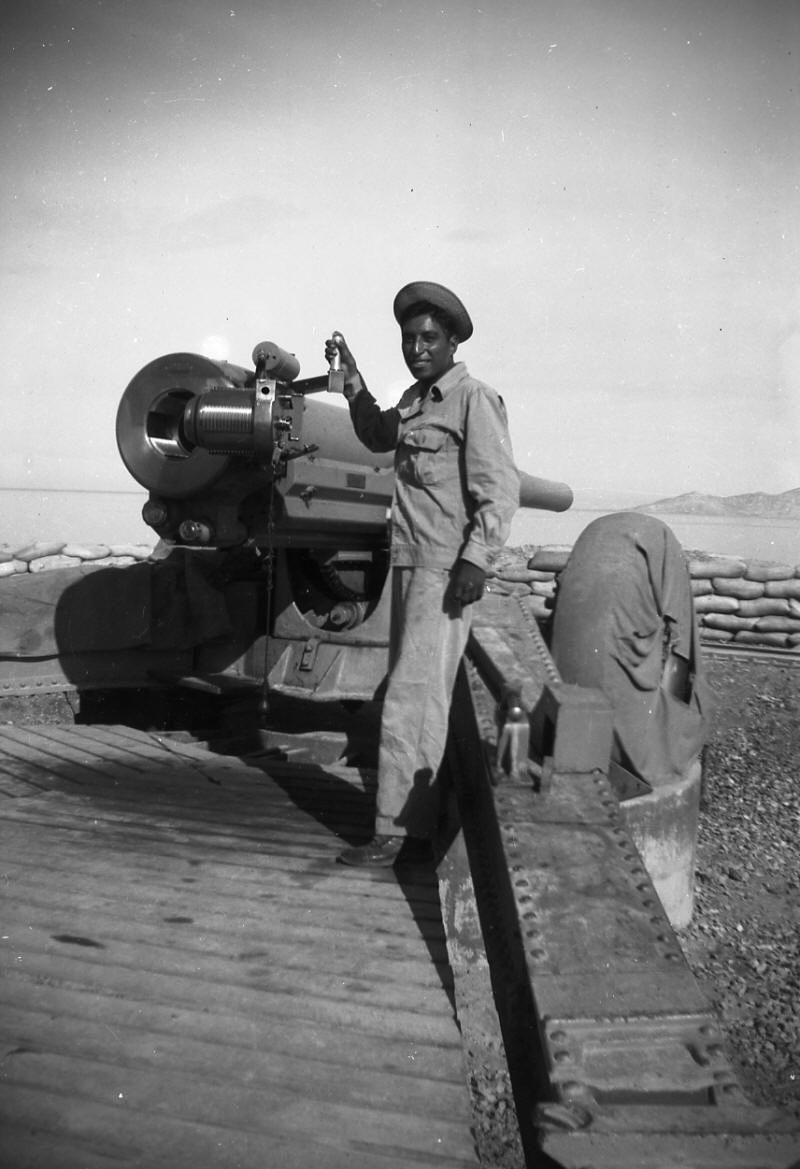
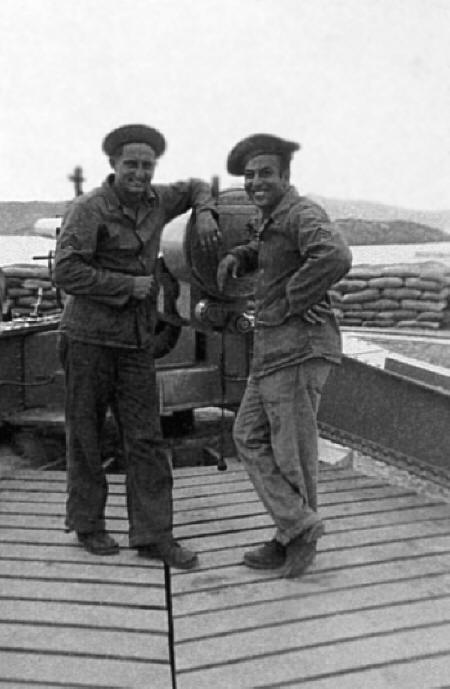
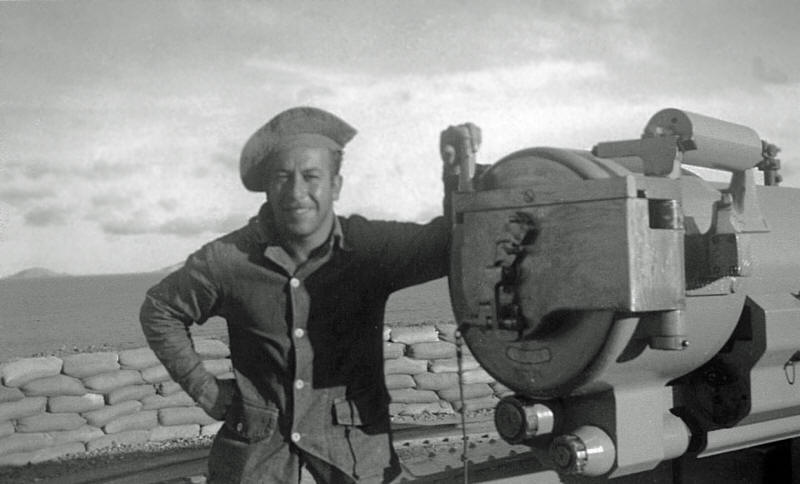
Joe provided the three photos seen above. Joe thinks it may have been Puerta La Cruz in Venezuela.
Can anyone verify this as the location of the gun?
The back end of a 155 mm (nicknamed a “Long Tom”). That’s one of my dad’s army buddies. You can see how large the diameter of the shells were.
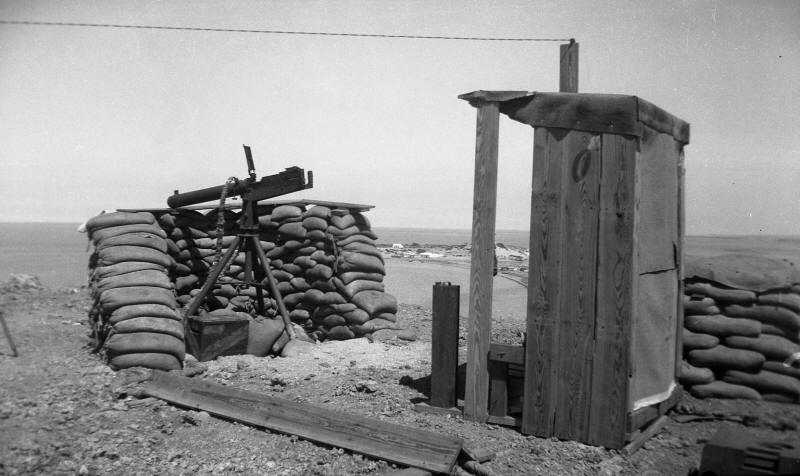
An Anti- aircraft gun with its ammunition belt ready to feed. The soldier on guard duty sat in the little booth to shade him from the sun. This looks like it might be Las Piedras in Venezuela. Again, the set-up in Aruba would have been the same.
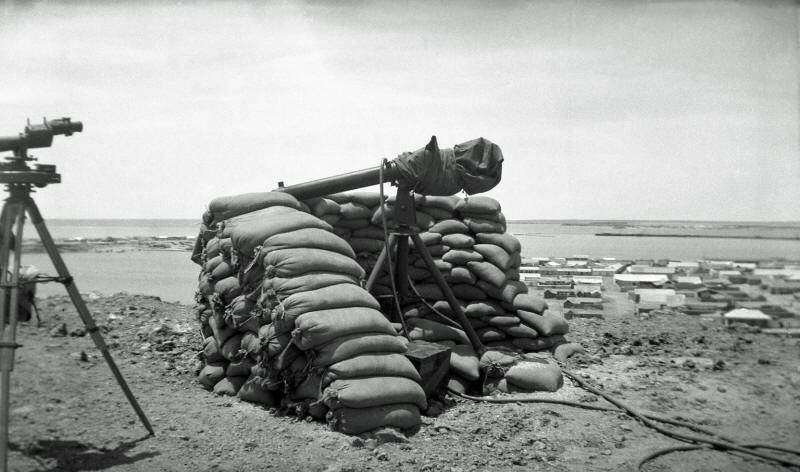
An Anti- aircraft gun (probably a 50 mm machine gun) to protect the crew that manned the big 155 mm. To the left is a sighting device, probably used to observe submarine activity & measure the coordinates to fire on ships.
Again, can anyone give us a clue as to the location of the gun?
Joe sent me the following photo, all he knows about it is these were troops his father and the other Americans were training to operate the guns. Can anyone tell from the uniforms, are they from Curaçao or Venezuela?
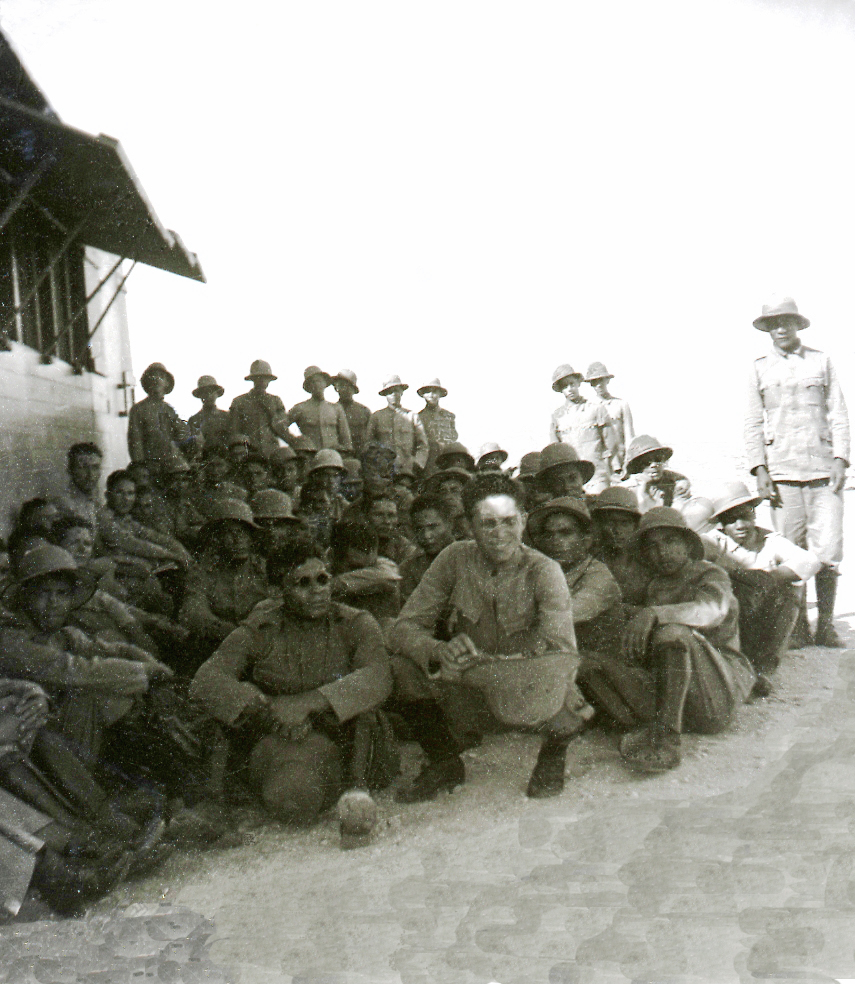
Any information about these and the other photos would be greatly appreciated.
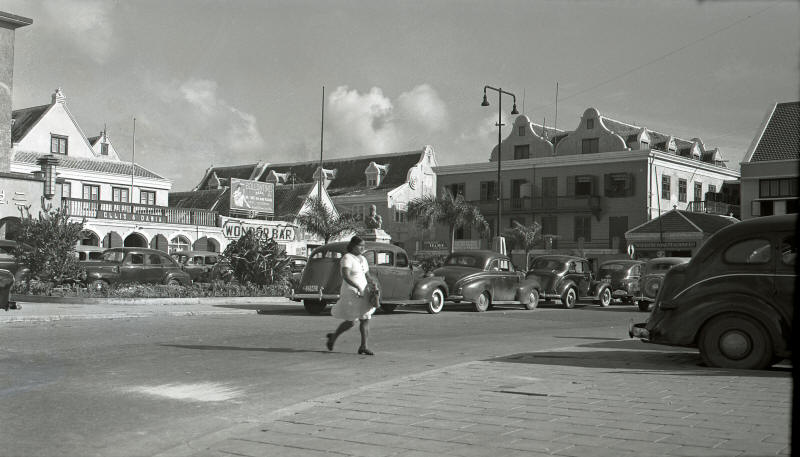
Joe provided this caption for the photo above. Can someone please verify if this is correct?
A main plaza, Brion Square in Curaçao, 1942 – 43.
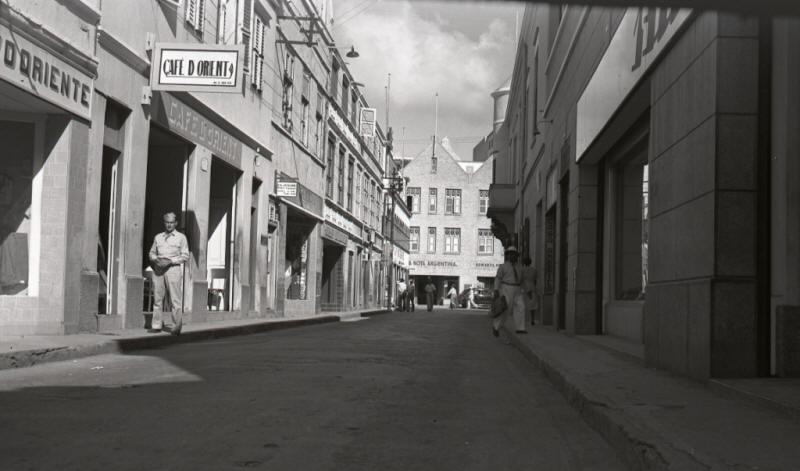
Can anyone identify this street in Curaçao

My dad standing with a buddy on Breedstraat in Curacao. My dad is the taller one. He was 6 feet 2 inches tall.
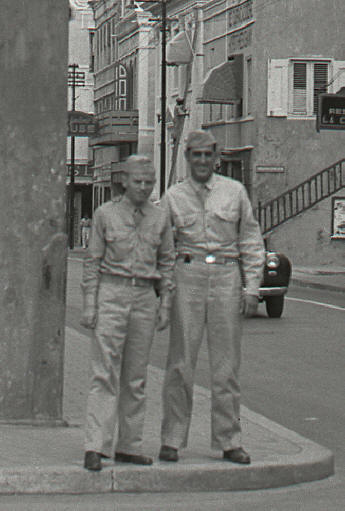
I cropped the photo with Joe's dad so you could see it more clearly.

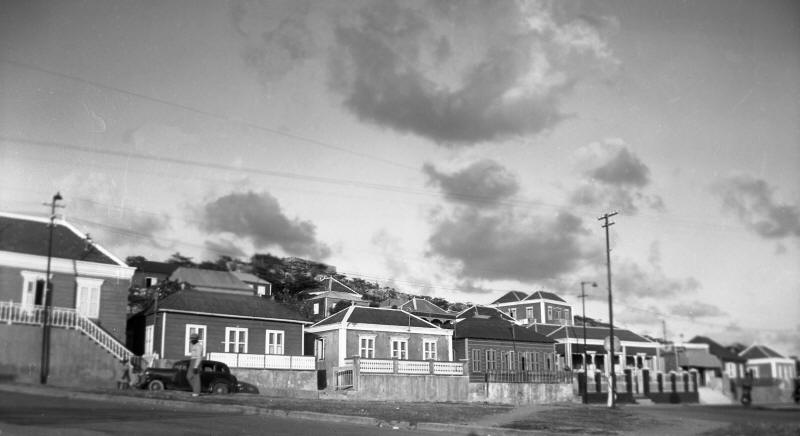
Allan van der Ree from Curacao pointed out that the rectangular outline at the ridge high above these houses is an old 18th century Fort, called Fort Waakzaamheid, directly translated it means “Fort Watchfulness”. There was and still is a great 360 degree view from that old Fort. During WWII, the US Armed forces had some AA-guns on the large flat and high situated Fort floor. The Fort was then a part of an US Observation Post situated on a steep hill, laying a few hundred meters away in the back of the Fort. On the top of that hill, there are still lies concrete remnants of this OP, as witnesses of WWII.
The Fort Waakzaamheid, also had a few barracks for the soldiers and the Fort itself was then armed with 37 mm AA guns and later in the war, these were replaced by 90 mm’s. See Photo below.
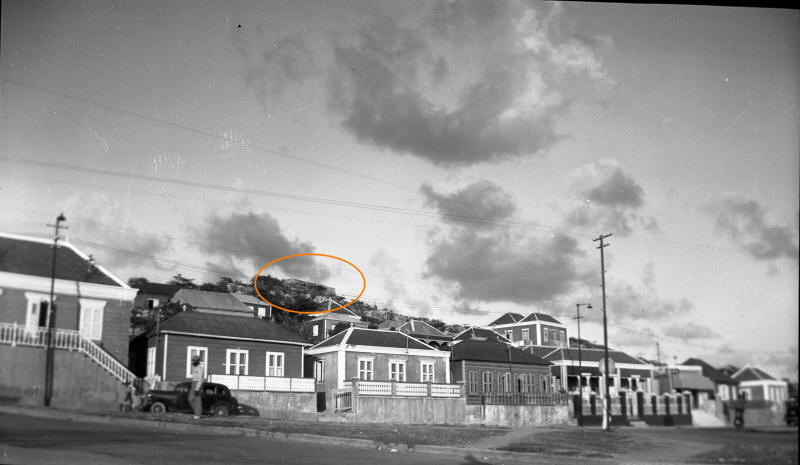
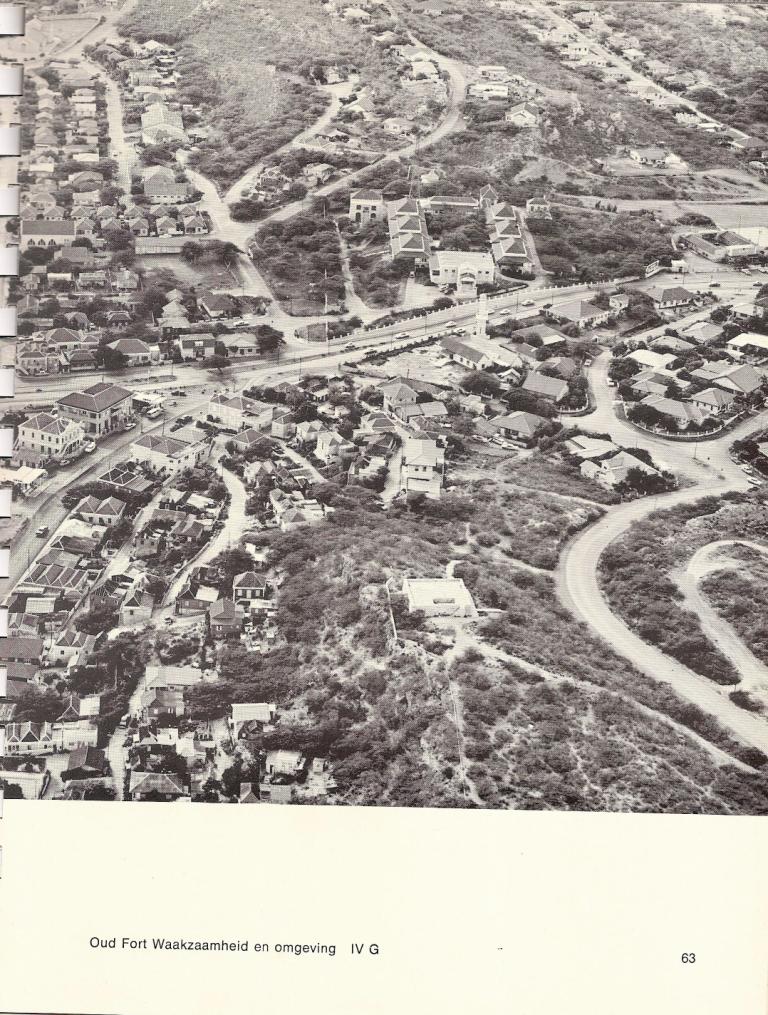
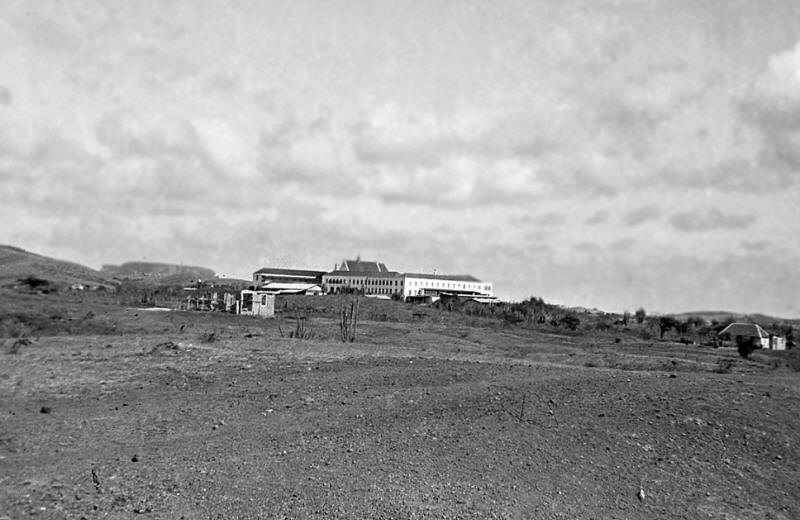
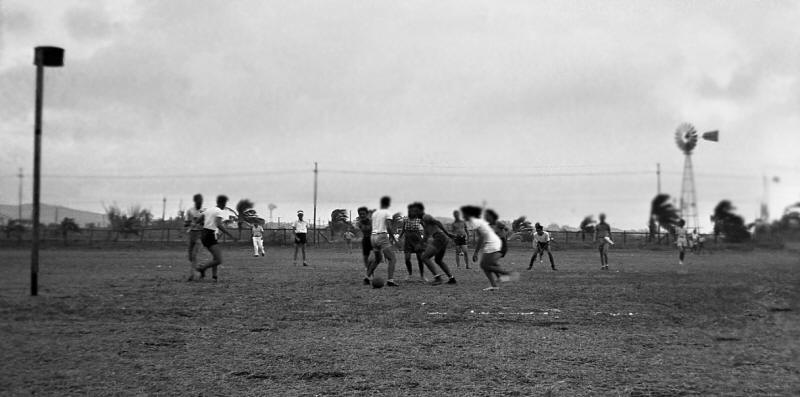
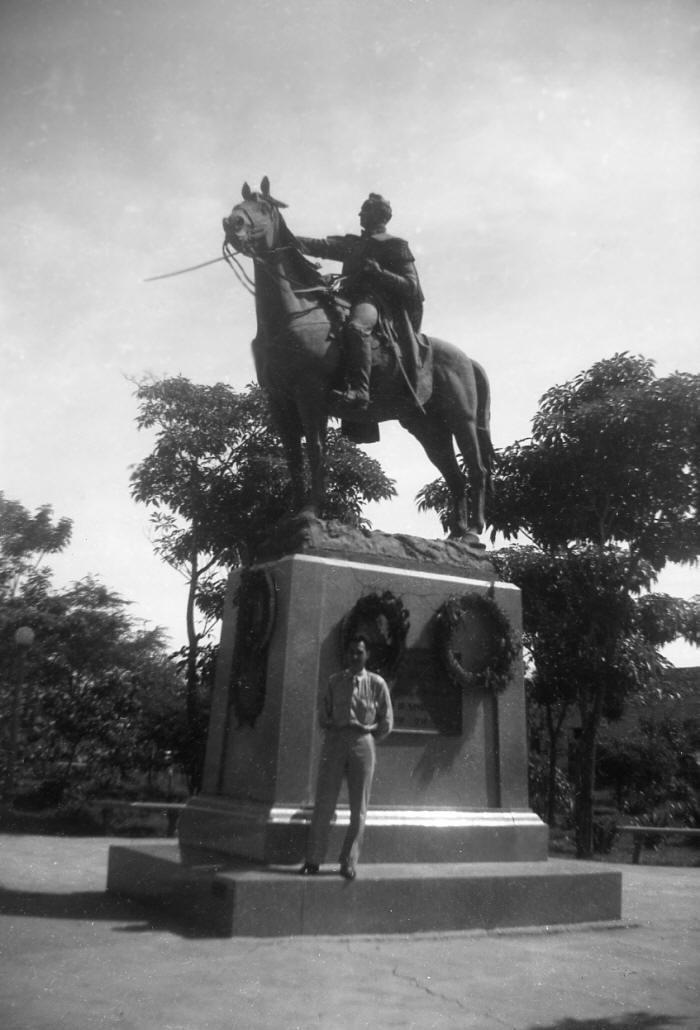
This photo is of a statue of Simon Bolivar, Leader of the Independence Revolution of Venezuela, the Liberator (El Libertador).

This is also statue of one of the freedom fighters of Venezuela during the revolution.
Curacao, West Indies. He is also Security Chief for a resort known as BLUE BAY CURACAO RESORT, a semi-gated community with an 18 holes golf course and golf club, a fantastic beach with bars and restaurant and of course the residential area, now over 200 villa’s and apartments.
The location of this resort was also the location of the 155 mm guns (Blue Bay) that protected Curacao during World War II. Mr. van der Ree noticed the silent remains of what was the WWII battery and became intrigued by these findings. He decided to learn more about their origin and at the same time, to save as much as possible of these remains for future generations and in honor of those, who came to protect the island of Curacao and its people.
To accomplish this he founded, "BATTLE-STATION BLAAUW, FORCE CURACAO 1942" and started to preserve at least one of the four gun-emplacements and bunker. At this location he also found several artifacts, such as an old rusty barbed wire and its curly stakes and also remnants of the famous jeep and one heavily rusted personnel-carrier truck, both vehicles were built at the Ford factory.
These are the photos Mr. van der Ree sent.
This map shows the resort that is now in the area. The circles show the camp area and the site of the guns.
This map shows the range of the 155 mm guns and where they were located and how much of the island they protected.
This photo graph show the Panama mount as it appears today. If you click on the photo of the mount it will take you to the photo of the same mount on the island of Aruba. It is ashamed that there is not someone in Aruba like Mr. van der Dee that will keep up the site of the mounts in Aruba.
This photograph show the old rusty barbed wire and its curly stakes found by Mr. van der Dee.
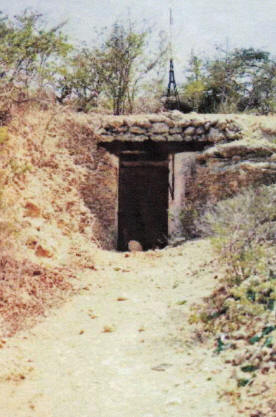
This photograph shows a bunker for the guns ammunition.
The photograph above shows the U. S. Barracks in 192
This photo was taken in January 2008 and shows what remains of the oil-changing pit at Blue Bay and left behind by the US troops in 1945. The concrete survived the salt air much better than did the metal Jeep, see photos below.
A view of the Blue Bay in 1942
